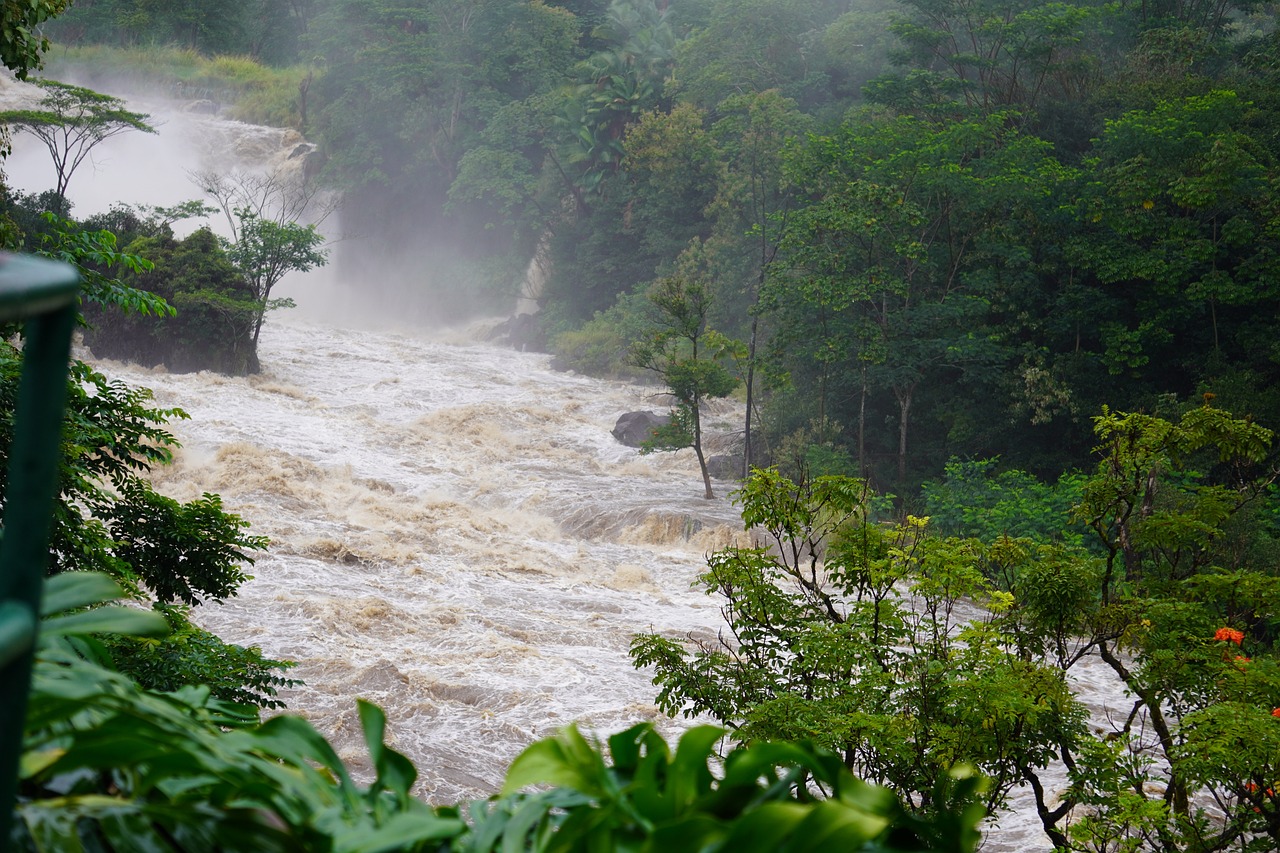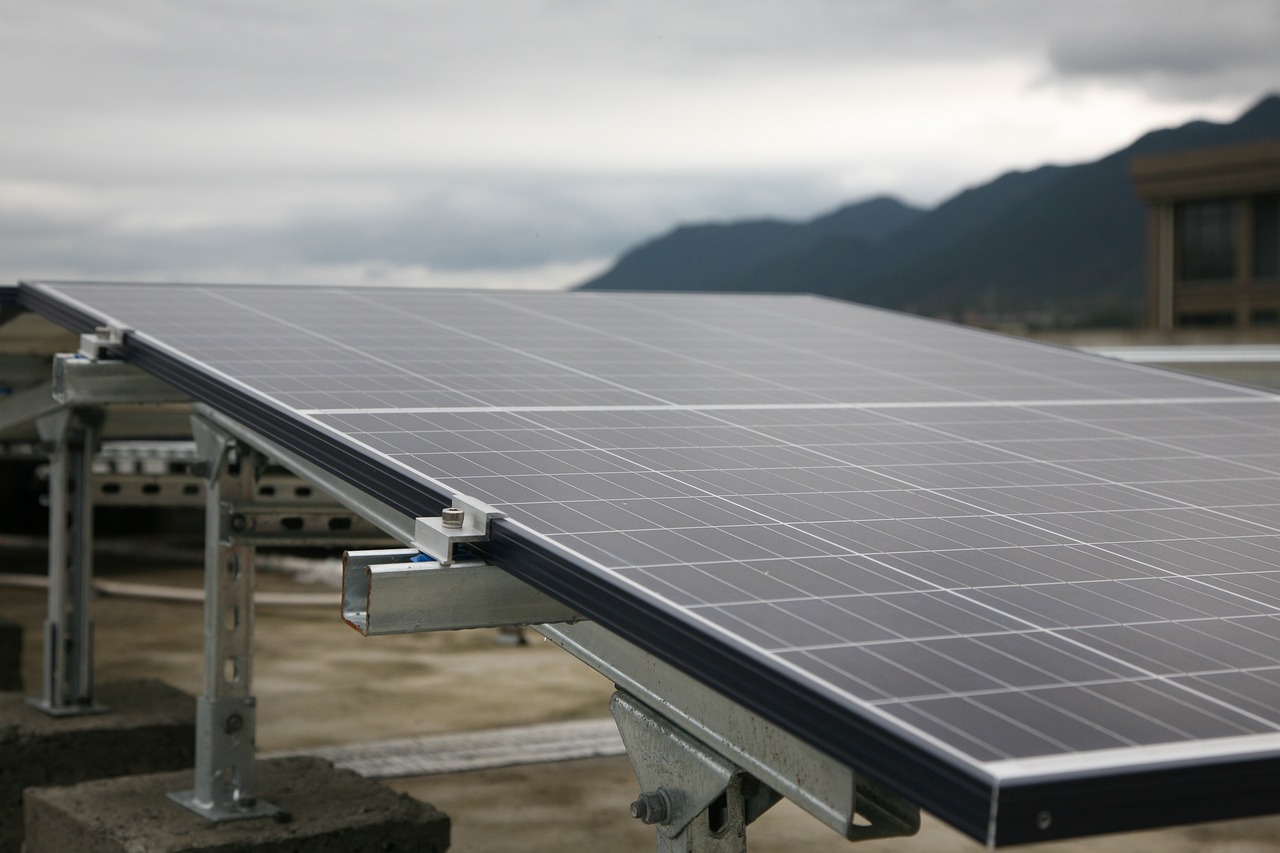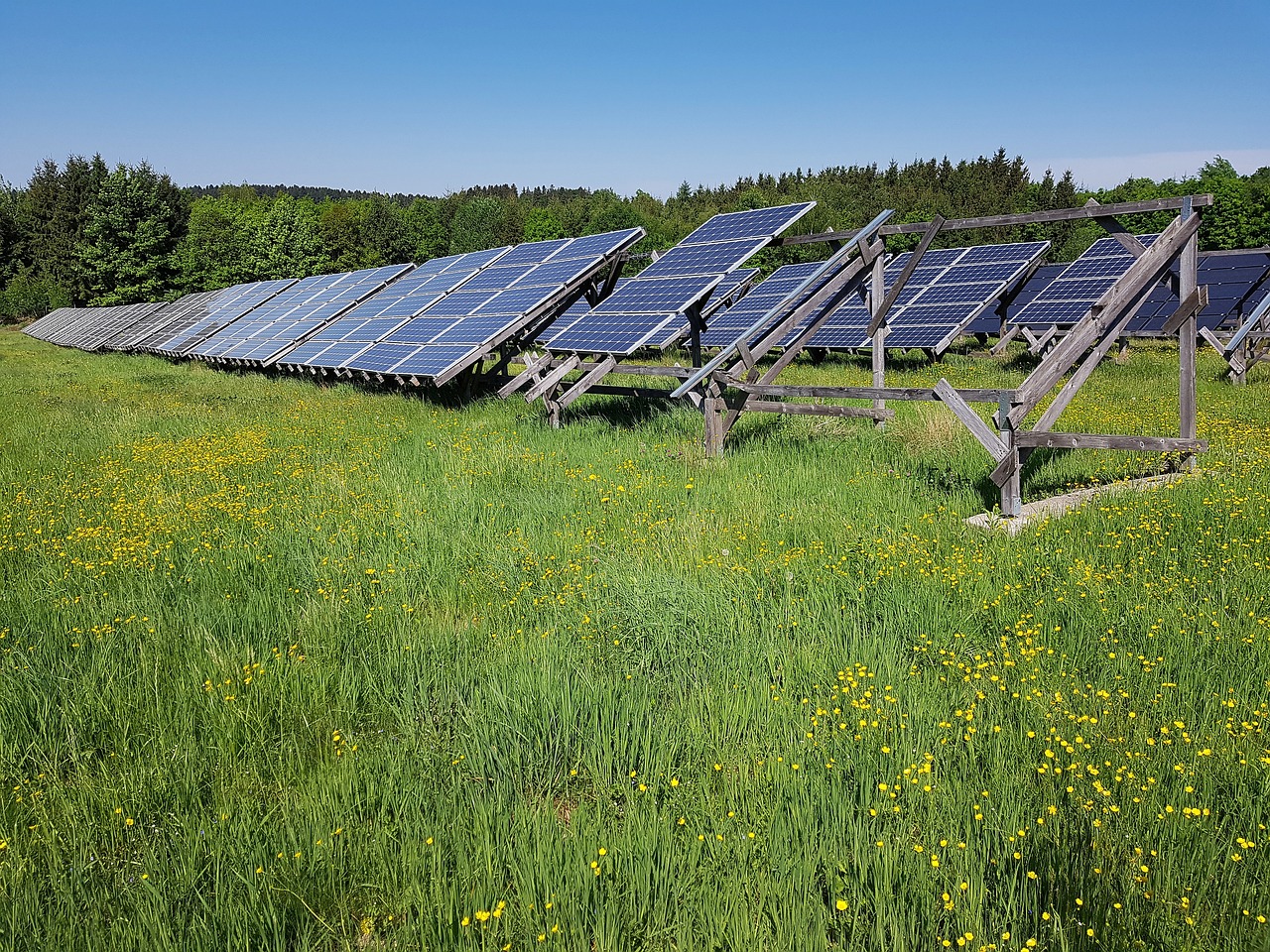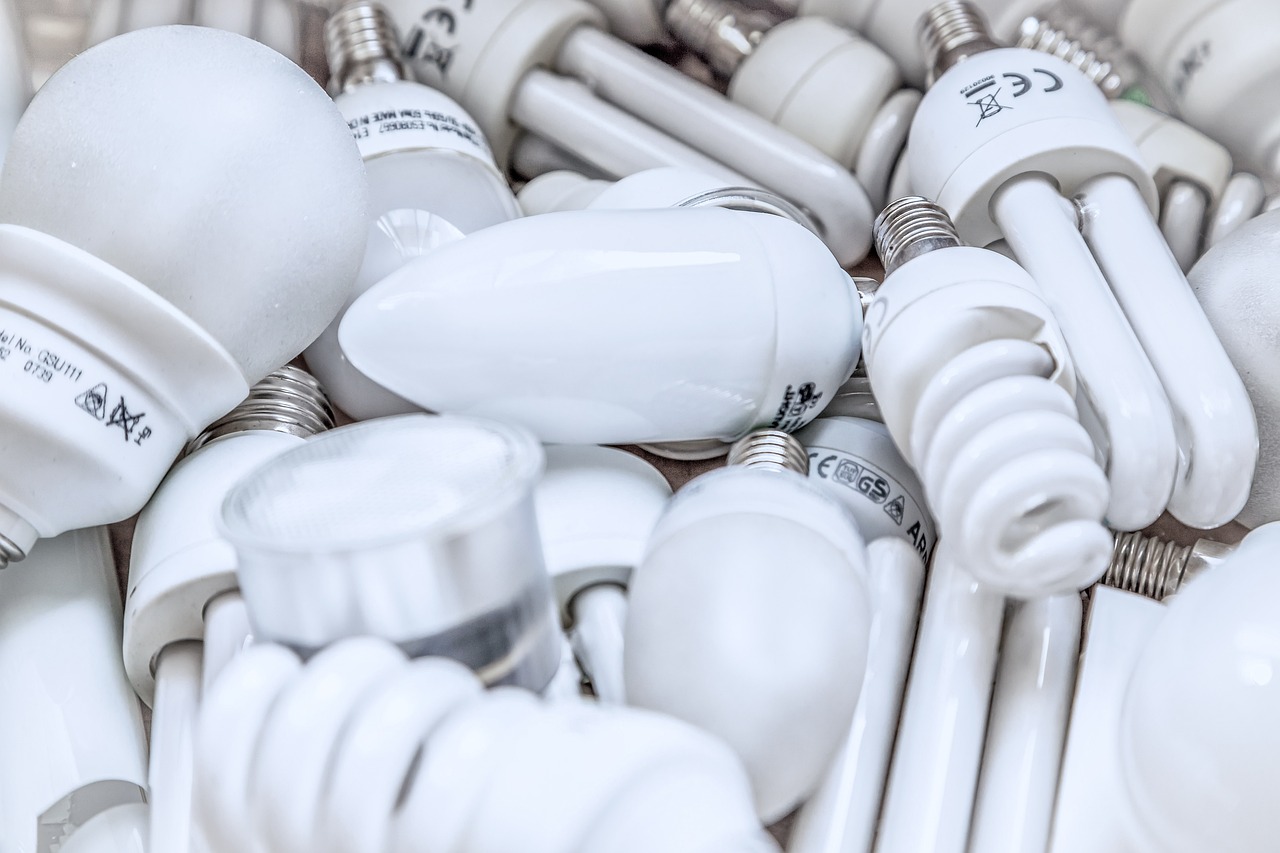The Role of Green Energy in Disaster Recovery
In a world where natural disasters seem to be increasing in frequency and intensity, the importance of effective disaster recovery strategies cannot be overstated. Enter green energy, a beacon of hope that not only addresses immediate energy needs but also paves the way for a more sustainable future. Imagine a community hit by a hurricane, where the power lines are down, and traditional energy sources are rendered useless. In such scenarios, renewable energy solutions like solar panels and wind turbines can step in, providing clean, reliable power when it’s needed most. This article dives into how green energy solutions can enhance disaster recovery efforts, providing sustainable power, reducing environmental impact, and fostering resilience in communities affected by natural disasters.
Green energy refers to renewable energy sources such as solar, wind, and hydroelectric power. These sources are essential in promoting sustainability and reducing reliance on fossil fuels, especially during disaster recovery phases. Unlike conventional energy sources, green energy harnesses natural phenomena, which means it can be generated without depleting the earth's resources. For instance, solar panels convert sunlight into electricity, while wind turbines utilize wind currents. This not only supports the immediate energy demands during recovery but also lays the groundwork for a greener future. Imagine a world where communities can bounce back from disasters without the heavy burden of greenhouse gas emissions. That’s the promise of green energy.
Utilizing green energy during disaster recovery offers numerous advantages, including:
- Reduced Carbon Emissions: By using renewable resources, communities can significantly lower their carbon footprint, helping combat climate change.
- Lower Operational Costs: Although the initial setup may be costly, the long-term savings on energy bills can be substantial, especially in areas prone to frequent disasters.
- Increased Energy Independence: Relying on local renewable energy sources reduces vulnerability to external energy supply disruptions.
All of these factors contribute to more effective recovery efforts. When communities can access sustainable energy sources quickly, they can focus on rebuilding rather than merely surviving.
Examining real-life examples where green energy solutions have been successfully integrated into disaster recovery can provide valuable insights. For instance, after Hurricane Sandy, many affected areas turned to solar power as a quick solution for energy needs. Solar panels were installed on rooftops, providing immediate electricity while traditional power lines were being repaired. This not only restored power rapidly but also showcased the reliability and efficiency of solar energy in crisis situations.
Solar power has proven effective in providing immediate energy solutions in areas affected by hurricanes. In places like New Jersey, solar energy systems were deployed to restore power to homes and community centers, enabling residents to access essential services. The installation of solar panels became a community effort, bringing people together to support one another in the recovery phase.
Similarly, wind energy systems have demonstrated resilience in earthquake-prone regions. For example, in areas of California that have faced significant seismic activity, wind turbines have been installed to provide a sustainable energy source that can be quickly deployed. These systems not only support recovery efforts but also help rebuild infrastructure, creating a more resilient community for the future.
Despite its benefits, the adoption of green energy in disaster recovery faces challenges. High initial costs can deter communities from investing in renewable technologies. Additionally, regulatory hurdles and the need for infrastructure development to support these systems can complicate implementation. However, the long-term benefits often outweigh these challenges, making it crucial for stakeholders to advocate for policies that facilitate the adoption of green energy solutions.
Engaging communities in green energy initiatives is crucial for successful disaster recovery. Education on renewable technologies can empower individuals and promote local participation in sustainable recovery efforts. When communities understand the benefits of green energy, they are more likely to embrace it as a viable option for recovery.
Implementing training programs can equip local residents with the knowledge and skills needed to install and maintain green energy systems. This fosters community resilience and self-sufficiency, ensuring that communities are not just passive recipients of aid but active participants in their recovery.
Building partnerships with local organizations can enhance the effectiveness of green energy initiatives. By collaborating with local groups, recovery efforts can be tailored to the specific needs and resources of affected communities. This ensures that the green energy solutions implemented are both sustainable and culturally relevant.
The future of disaster recovery will increasingly rely on green energy solutions. Continued innovation and investment in renewable technologies will be essential for building resilient communities capable of withstanding future disasters. As more communities embrace green energy, we can envision a world where recovery from disasters is not just about returning to normal but creating a better, more sustainable normal.
- What is green energy? Green energy refers to renewable energy sources like solar, wind, and hydroelectric power that are sustainable and environmentally friendly.
- How does green energy help in disaster recovery? Green energy provides reliable power, reduces carbon emissions, and promotes energy independence, all of which are crucial during recovery efforts.
- What are some challenges of implementing green energy in disaster recovery? Challenges include high initial costs, regulatory hurdles, and the need for infrastructure development.
- How can communities engage in green energy initiatives? Communities can participate through education, training programs, and partnerships with local organizations to implement green energy solutions effectively.

Understanding Green Energy
Have you ever thought about where our energy comes from? Well, green energy is a term that encompasses renewable energy sources like solar, wind, and hydroelectric power. These energy sources are not just buzzwords; they represent a significant shift in how we think about energy production and consumption. Unlike traditional fossil fuels, which are finite and contribute to environmental degradation, green energy is sustainable and has a much lower impact on our planet. This is especially crucial during disaster recovery phases when communities are trying to rebuild and recover from the devastating effects of natural disasters.
Green energy is essential in promoting sustainability, and its relevance skyrockets when disasters strike. Imagine a community recovering from a hurricane or an earthquake. In the aftermath, the need for reliable and clean energy becomes paramount. This is where green energy shines bright! It offers a lifeline, providing power when conventional sources may be down or unavailable. Not only does it help in immediate recovery efforts, but it also lays the groundwork for a more resilient infrastructure that can withstand future calamities.
To better understand the impact of green energy, let's take a closer look at its primary sources:
| Energy Source | Description | Benefits |
|---|---|---|
| Solar Energy | Energy harnessed from the sun using solar panels. | Abundant, reduces electricity bills, and can be deployed quickly. |
| Wind Energy | Energy generated from wind using turbines. | Clean, renewable, and can be produced on a large scale. |
| Hydroelectric Energy | Energy produced from moving water, typically through dams. | Reliable and can provide a steady supply of electricity. |
As we dive deeper into the world of green energy, it's essential to recognize its potential to transform disaster recovery efforts. By reducing our reliance on fossil fuels, we not only cut down on carbon emissions but also promote energy independence. This independence is crucial for communities recovering from disasters, as it allows them to regain control over their energy resources and reduce vulnerability to future disruptions.
In summary, understanding green energy is more than just a trend; it’s a necessary evolution in our approach to energy production. It empowers communities to build back better after disasters, ensuring that they are not only recovering but also becoming more resilient for the future. Are you ready to embrace this green revolution?

Benefits of Green Energy in Disasters
When disaster strikes, the immediate aftermath can be chaotic and overwhelming. Traditional energy sources often falter, leading to power outages and a lack of essential services. This is where green energy steps in as a game changer. By harnessing renewable energy sources like solar, wind, and hydroelectric power, communities can not only recover more effectively but also pave the way for a sustainable future. But what exactly are the benefits of adopting green energy solutions during disaster recovery?
First and foremost, one of the most significant advantages is the reduction in carbon emissions. In the wake of a disaster, rebuilding efforts typically involve heavy machinery and a reliance on fossil fuels, which can exacerbate environmental damage. By integrating green energy, communities can minimize their carbon footprint and contribute to a healthier planet. Imagine a community that not only rebuilds its infrastructure but does so in a way that respects and nurtures the environment. This dual benefit is a win-win situation!
Moreover, utilizing green energy can lead to lower operational costs. While the initial investment in renewable technologies might seem daunting, the long-term savings are substantial. For instance, solar panels can significantly reduce electricity bills, making them an attractive option for communities looking to stretch their limited resources during recovery. With these savings, funds can be redirected to other critical recovery efforts, such as healthcare and education.
Another compelling benefit is the increased energy independence that green energy solutions provide. In times of crisis, relying on external energy sources can be risky. Natural disasters can disrupt supply chains, leaving communities vulnerable. By investing in local renewable energy projects, communities can generate their own power, ensuring that they are less dependent on outside resources. This autonomy not only enhances resilience but also fosters a sense of empowerment among residents.
To illustrate these benefits, consider the following table that outlines the key advantages of green energy in disaster recovery:
| Benefit | Description |
|---|---|
| Reduction in Carbon Emissions | Minimizes environmental impact during recovery efforts. |
| Lower Operational Costs | Long-term savings on energy bills and resource allocation. |
| Increased Energy Independence | Reduces reliance on external energy sources, enhancing resilience. |
In addition, green energy can also enhance community engagement. When residents are involved in renewable energy projects, they feel more connected to the recovery process. This sense of ownership can lead to increased volunteerism and collaboration, which are essential for effective disaster recovery. Think of it as a community coming together, much like a family rallying to support each other in tough times.
However, it’s essential to recognize that while the benefits are numerous, the path to implementing green energy solutions is not without challenges. But the potential rewards far outweigh the hurdles. By embracing renewable energy, communities not only recover from disasters but also set a precedent for sustainable living, ensuring that future generations inherit a healthier planet.
- What types of green energy are most effective in disaster recovery? Solar and wind energy are often the most effective due to their scalability and availability.
- How can communities get started with green energy initiatives? Engaging local organizations and seeking government grants can be a great start.
- Are there any downsides to using green energy in disaster recovery? Initial costs and the need for infrastructure can be barriers, but the long-term benefits often outweigh these challenges.

Case Studies of Successful Implementation
Examining real-life examples where green energy solutions have been successfully integrated into disaster recovery provides valuable insights and highlights best practices for future initiatives. One of the most notable success stories comes from the aftermath of Hurricane Sandy in 2012. In the wake of this devastating storm, communities in New Jersey turned to solar energy as a means of rebuilding. Local organizations partnered with solar companies to install solar panels on homes and community buildings, allowing residents to regain power quickly and sustainably. This initiative not only restored electricity but also reduced reliance on fossil fuels, showcasing how renewable energy can play a pivotal role in recovery.
Another compelling case is the use of wind energy in the recovery efforts following the 2010 earthquake in Haiti. The country faced immense challenges in restoring its energy infrastructure, but innovative solutions were implemented. A partnership between international NGOs and local governments led to the installation of small-scale wind turbines in rural areas. These turbines provided much-needed energy for hospitals and schools, demonstrating how renewable technologies can be deployed rapidly in disaster-stricken regions. The success of this initiative highlighted the resilience of wind energy systems and their ability to support communities during critical recovery phases.
To further illustrate the effectiveness of green energy in disaster recovery, consider the case of Puerto Rico after Hurricane Maria in 2017. The island's energy grid was severely damaged, leaving millions without power for extended periods. In response, various organizations mobilized to install solar microgrids in affected areas. These systems not only restored electricity but also empowered local communities to take control of their energy resources. By utilizing solar energy, they reduced their vulnerability to future storms and fostered a sense of self-sufficiency. The success of these microgrids has sparked interest in expanding renewable energy initiatives across the island, paving the way for a more resilient energy future.
These case studies underscore the potential of green energy to transform disaster recovery efforts. By learning from these successful implementations, communities can develop tailored strategies that harness renewable energy sources to enhance their resilience. The lessons learned from these experiences can guide future initiatives, ensuring that the integration of green energy becomes a standard practice in disaster recovery planning.
- What is green energy?
Green energy refers to renewable energy sources such as solar, wind, and hydroelectric power that are sustainable and environmentally friendly.
- How does green energy help in disaster recovery?
Green energy provides reliable power, reduces carbon emissions, lowers operational costs, and fosters energy independence, all of which are crucial during recovery efforts.
- Can green energy systems be deployed quickly after a disaster?
Yes, systems like solar panels and wind turbines can often be installed rapidly, making them effective solutions for immediate energy needs in disaster-stricken areas.
- What are the challenges of adopting green energy in disaster recovery?
Challenges include high initial costs, regulatory hurdles, and the need for infrastructure development to support renewable energy systems.
- How can communities engage in green energy initiatives?
Communities can participate by educating themselves about renewable technologies and collaborating with local organizations to implement green energy solutions.

Solar Power in Hurricane Recovery
When hurricanes strike, they often leave a trail of destruction in their wake, disrupting power supplies and making recovery a daunting task. In such scenarios, solar power emerges as a beacon of hope, providing immediate and sustainable energy solutions for affected communities. Imagine a world where, even after a devastating storm, the sun shines brightly, powering homes and businesses with clean energy. This is not just a dream; it’s a reality that many communities have embraced.
One of the most compelling advantages of solar power in hurricane recovery is its quick deployment. Unlike traditional energy sources that may take weeks or months to restore, solar panels can be installed rapidly, often within days. For instance, in the aftermath of Hurricane Maria in Puerto Rico, solar energy systems were set up in numerous homes and community centers, providing essential electricity for refrigeration, medical equipment, and communication devices. This swift action not only helped to meet immediate energy needs but also fostered a sense of normalcy amidst chaos.
Moreover, solar power systems are designed to be resilient. Most solar panels can withstand strong winds and harsh weather conditions, making them ideal for hurricane-prone areas. They can be installed on rooftops or in community solar farms, allowing for a decentralized energy model that reduces the risk of widespread outages. In fact, studies have shown that areas equipped with solar energy systems experience significantly shorter recovery times compared to those reliant on traditional power grids.
Another significant benefit of utilizing solar power during disaster recovery is its environmental impact. By harnessing the sun’s energy, communities can reduce their reliance on fossil fuels, thereby decreasing carbon emissions and contributing to a healthier planet. This shift towards renewable energy not only aids in recovery but also sets the stage for a more sustainable future. After all, why rebuild with the same systems that contributed to the problem in the first place?
To illustrate the effectiveness of solar power in hurricane recovery, let’s take a look at a few notable case studies:
| Case Study | Location | Impact |
|---|---|---|
| Hurricane Maria Recovery | Puerto Rico | Installation of over 1,000 solar systems providing power to critical facilities. |
| Hurricane Harvey Response | Texas | Deployment of mobile solar generators to support emergency services. |
| Hurricane Irma Recovery | Florida | Community solar projects enabled faster restoration of power to affected neighborhoods. |
In conclusion, solar power is not just a temporary fix; it represents a long-term solution for communities recovering from hurricanes. By investing in solar energy, we can empower communities to become more resilient, reduce their environmental footprint, and ensure that they are better prepared for future disasters. As we look ahead, it’s clear that the role of solar power in disaster recovery will only continue to grow, making it an essential component of our collective response to climate change and natural disasters.
Q: How quickly can solar panels be installed after a hurricane?
A: Solar panels can often be installed within days, providing immediate energy solutions to affected areas.
Q: Are solar panels durable enough to withstand hurricane winds?
A: Yes, most solar panels are designed to withstand high winds and severe weather conditions, making them suitable for hurricane-prone regions.
Q: How does solar power impact the environment during recovery efforts?
A: Utilizing solar power reduces reliance on fossil fuels, thereby decreasing carbon emissions and promoting a healthier environment.

Wind Energy After Earthquakes
When earthquakes strike, they leave behind a trail of devastation that can cripple communities and disrupt essential services. In such dire circumstances, the **resilience** of energy systems becomes paramount. This is where wind energy steps in as a beacon of hope. Wind energy systems, particularly modern wind turbines, are designed to withstand extreme weather conditions, including the shocks from seismic activity. Unlike traditional energy sources, which may falter in the face of disaster, wind energy can be rapidly deployed and restored, making it a reliable option for communities in recovery.
One of the most compelling examples of wind energy's effectiveness post-earthquake can be seen in regions like **Chile**, where significant seismic events have prompted the integration of renewable energy sources into recovery plans. After the **2010 earthquake**, for instance, the Chilean government prioritized renewable energy, including wind, to restore power to affected areas. The quick installation of wind turbines not only provided immediate energy solutions but also contributed to the long-term sustainability of the region's energy grid.
The advantages of using wind energy in earthquake recovery extend beyond just restoring power. Wind energy systems can play a crucial role in rebuilding infrastructure. For example, they can provide energy for construction activities, helping to accelerate the rebuilding process. Moreover, wind energy reduces reliance on fossil fuels, leading to lower carbon emissions, which is essential for the environmental recovery of affected areas.
However, the integration of wind energy into disaster recovery is not without its challenges. Initial investment costs can be high, and there may be regulatory hurdles that slow down the deployment of wind energy systems. Additionally, communities need to be educated about the benefits and maintenance of wind energy technologies. This is where community engagement becomes vital. By involving local residents in the planning and implementation stages, we can ensure that wind energy solutions are tailored to meet the specific needs of the community.
In summary, wind energy offers a sustainable and resilient solution for communities recovering from earthquakes. Its ability to provide immediate power, support infrastructure rebuilding, and contribute to long-term sustainability makes it an invaluable asset in disaster recovery efforts. As we look to the future, investing in wind energy not only helps communities recover but also prepares them for the inevitable challenges posed by natural disasters.
- What is wind energy?
Wind energy is the process of using wind to generate electricity through wind turbines, which convert kinetic energy from the wind into electrical power. - How does wind energy help after earthquakes?
Wind energy systems can be quickly deployed to restore power, support infrastructure rebuilding, and reduce reliance on fossil fuels, which is crucial during recovery efforts. - Are wind turbines safe during earthquakes?
Modern wind turbines are engineered to withstand seismic activity and are designed with safety features to minimize damage during earthquakes. - What are the challenges of implementing wind energy in disaster recovery?
Challenges include high initial costs, regulatory hurdles, and the need for community education and engagement.

Challenges in Adopting Green Energy
While the benefits of green energy in disaster recovery are compelling, there are significant challenges that hinder its widespread adoption. One of the most pressing issues is the high initial costs associated with renewable energy technologies. For many communities, especially those recovering from disasters, the financial burden of installing solar panels or wind turbines can be daunting. Even though these systems often pay off in the long run through reduced energy costs, the upfront investment can be a barrier to entry.
Another challenge lies in regulatory hurdles. Different regions have varying laws and regulations regarding the installation and use of green energy systems. Navigating these regulatory landscapes can be confusing and time-consuming, often delaying the implementation of renewable energy solutions. For instance, some areas may require extensive permits or environmental assessments before any green energy project can commence, which can slow down recovery efforts when time is of the essence.
Moreover, the need for infrastructure development poses a significant challenge. Many disaster-stricken areas may lack the necessary infrastructure to support renewable energy systems. This includes not only the physical structures but also the technological frameworks needed to integrate green energy into existing power grids. Without a reliable infrastructure, even the best green energy solutions can fall short of their potential, leaving communities vulnerable and without the energy they desperately need.
In addition to these factors, there is often a lack of awareness and understanding of green energy technologies among local populations. This gap in knowledge can lead to skepticism and resistance to adopting new systems. For successful implementation, it's essential to engage communities and provide education on the benefits and functioning of renewable energy sources. By doing so, communities can become advocates for green energy solutions, helping to overcome some of the barriers to adoption.
Lastly, the intermittent nature of renewable energy sources, such as solar and wind, can pose challenges in ensuring a stable energy supply. During disaster recovery, when reliable energy is crucial, the variability of these energy sources can complicate recovery efforts. As a solution, integrating energy storage systems can help mitigate this issue, allowing communities to store excess energy generated during peak production times for use when production is low.
In summary, while the transition to green energy in disaster recovery presents numerous advantages, addressing these challenges is critical for its success. By focusing on reducing initial costs, streamlining regulations, developing necessary infrastructure, increasing community awareness, and improving energy reliability, we can pave the way for a more sustainable and resilient future.
- What are the main benefits of using green energy in disaster recovery?
Green energy helps reduce carbon emissions, lowers operational costs, and increases energy independence, making recovery efforts more effective. - What types of green energy are most commonly used?
Solar, wind, and hydroelectric power are the most popular renewable energy sources utilized in disaster recovery. - How can communities overcome the challenges of adopting green energy?
By focusing on education, building partnerships, and advocating for supportive policies, communities can navigate the challenges associated with green energy adoption.

Community Engagement and Education
Engaging communities in green energy initiatives is not just a good idea; it’s a necessity for successful disaster recovery. When a natural disaster strikes, the immediate focus is often on restoring basic services, but long-term sustainability is equally crucial. By involving the community in the recovery process, we empower individuals to take ownership of their energy future. This can lead to a more resilient and self-sufficient community, capable of withstanding future challenges. Think of it as planting seeds of knowledge that will grow into a forest of renewable energy solutions, providing shade and sustenance for years to come.
Education plays a pivotal role in this process. When communities are informed about renewable technologies, they are more likely to embrace them. Imagine a neighborhood where everyone understands how solar panels work, or how to harness wind energy. This collective knowledge not only fosters enthusiasm but also encourages local participation in sustainable recovery efforts. By organizing workshops and informational sessions, communities can learn about the benefits of green energy and how these solutions can be integrated into their lives post-disaster.
Moreover, implementing training programs can equip local residents with the skills needed to install and maintain green energy systems. Such initiatives can transform residents from passive recipients of aid into active contributors to their recovery. For instance, a community that learns how to install solar panels can significantly reduce its reliance on external power sources. This not only cuts costs but also enhances energy independence. Think of it as teaching someone to fish instead of giving them a fish; the skills gained can last a lifetime.
Building partnerships with local organizations is another critical aspect of community engagement. These collaborations can enhance the effectiveness of green energy initiatives, ensuring that recovery efforts are tailored to the specific needs of the affected communities. Local organizations often have a better understanding of the community's unique challenges and resources, making them invaluable allies in the push for sustainable energy solutions. By working together, communities can create a comprehensive plan that addresses both immediate recovery needs and long-term sustainability goals.
In summary, community engagement and education are the cornerstones of integrating green energy into disaster recovery. By empowering individuals through knowledge and fostering partnerships, we can build resilient communities that not only recover from disasters but thrive in the face of future challenges. The journey towards sustainability is not a solo endeavor; it requires the collective effort of everyone involved.
- Why is community engagement important in disaster recovery?
Community engagement ensures that recovery efforts are relevant and effective, as local residents understand their own needs best. - How can education on green energy impact disaster recovery?
Education empowers individuals to adopt and maintain renewable energy solutions, fostering resilience and self-sufficiency. - What role do local organizations play in green energy initiatives?
Local organizations provide valuable insights and resources, helping tailor recovery efforts to the specific context of the community. - Are there training programs available for residents?
Yes, many initiatives offer training programs to equip residents with the skills needed for installing and maintaining green energy systems.

Training Programs for Local Residents
Implementing training programs for local residents is a game-changer in the realm of disaster recovery. These programs not only equip individuals with the necessary skills to install and maintain green energy systems, but they also foster a sense of community resilience and self-sufficiency. Imagine a neighborhood coming together, learning new technologies, and empowering each other to rebuild stronger than before. This collaborative spirit is essential in the aftermath of natural disasters, where every hand counts and every skill matters.
One of the key benefits of these training programs is that they can be tailored to the specific needs of the community. For instance, in areas prone to hurricanes, training might focus on solar panel installation and maintenance, while in wind-rich regions, the emphasis could shift toward wind turbine technology. By aligning the training with local resources and environmental factors, communities can maximize the effectiveness of their recovery efforts.
Furthermore, these training initiatives often include partnerships with local educational institutions, non-profits, and industry experts, creating a rich learning environment. Participants can engage in hands-on workshops, simulations, and even real-world projects that not only enhance their skills but also contribute directly to the community's recovery. Imagine local residents working together to set up solar grids or wind turbines, transforming their neighborhoods into models of sustainability.
In addition to technical skills, these programs can also cover essential topics such as energy efficiency, disaster preparedness, and sustainability practices. This holistic approach ensures that participants are not just learning how to install systems but are also understanding the broader implications of their work. They become advocates for green energy, spreading awareness and knowledge throughout their communities.
To illustrate the impact of such training programs, consider the following table that outlines potential training topics and their benefits:
| Training Topic | Benefits |
|---|---|
| Solar Panel Installation | Empowers residents to harness solar energy, reducing reliance on traditional power sources. |
| Wind Turbine Maintenance | Ensures sustainable energy production while providing job opportunities in the community. |
| Energy Efficiency Practices | Helps households reduce energy consumption and lower utility bills. |
| Disaster Preparedness | Equips residents with knowledge to respond effectively to future disasters. |
In conclusion, training programs for local residents are not just about teaching skills; they are about building a community that is prepared to face the challenges of disaster recovery head-on. By investing in education and training, communities can cultivate a sense of ownership over their energy solutions, leading to a more sustainable and resilient future.
- What types of training programs are available for green energy? Training programs can include solar panel installation, wind turbine maintenance, and energy efficiency practices.
- How can local residents benefit from these programs? Residents gain valuable skills, enhance community resilience, and contribute to sustainable recovery efforts.
- Are these training programs costly? Many programs are subsidized by government grants or non-profit organizations, making them accessible to local residents.
- Can these programs help with job creation? Yes, training residents in green energy technologies can lead to new job opportunities within the community.

Partnerships with Local Organizations
Building is a pivotal strategy for enhancing the effectiveness of green energy initiatives during disaster recovery. These collaborations bring together various stakeholders, including government agencies, non-profits, and community groups, to create a comprehensive approach to recovery. By leveraging local knowledge and resources, these partnerships can tailor solutions that meet the specific needs of affected communities.
For instance, local organizations often have a deep understanding of the community's unique challenges and resources. They can identify areas where green energy solutions can be most beneficial, ensuring that efforts are not only sustainable but also culturally appropriate. Such partnerships can also facilitate access to funding and grants, making it easier to implement renewable energy projects. In many cases, these organizations serve as a bridge between the community and larger institutions, helping to navigate the complexities of disaster recovery.
Moreover, engaging local organizations fosters a sense of ownership among community members. When residents see their own organizations leading the charge on green energy initiatives, they are more likely to participate actively. This can lead to increased volunteerism, community engagement, and a stronger collective response to recovery efforts. Additionally, local organizations can help disseminate information about the benefits of green energy, educating the public on how these solutions can enhance resilience against future disasters.
To illustrate the impact of these partnerships, consider the following table that outlines key benefits of collaborating with local organizations in disaster recovery:
| Benefit | Description |
|---|---|
| Local Knowledge | Understanding the community’s specific needs and resources. |
| Resource Mobilization | Accessing funding and grants for renewable energy projects. |
| Community Engagement | Fostering ownership and active participation in recovery efforts. |
| Education | Informing the community about the benefits and workings of green energy. |
In conclusion, partnerships with local organizations are not just beneficial; they are essential for the successful implementation of green energy solutions in disaster recovery. By working together, communities can harness their collective strengths, ensuring a more resilient and sustainable future.
- What role do local organizations play in disaster recovery? Local organizations provide essential knowledge, resources, and community engagement, making recovery efforts more effective and tailored to specific needs.
- How can communities get involved in green energy initiatives? Communities can participate by collaborating with local organizations, attending educational workshops, and volunteering for projects that promote renewable energy.
- What are the long-term benefits of using green energy in disaster recovery? Long-term benefits include reduced reliance on fossil fuels, lower operational costs, and enhanced community resilience against future disasters.

Future of Green Energy in Disaster Recovery
The future of disaster recovery is set to be transformed by the integration of green energy solutions. As the frequency and intensity of natural disasters continue to rise, communities are recognizing the necessity of sustainable recovery methods. Green energy not only offers a reliable power source but also aligns with the pressing need to combat climate change. Imagine a world where communities can bounce back from disasters not just with the same infrastructure, but with an improved, more sustainable version of it. This vision is becoming a reality, thanks to advancements in renewable technologies.
Investment in green energy is crucial for the resilience of communities. As we move forward, we can expect to see a variety of renewable energy sources becoming more accessible and affordable. Solar panels, wind turbines, and hydroelectric systems will likely become staples in disaster recovery plans. In fact, many governments and organizations are already allocating funds to develop these technologies, ensuring that they are not just temporary solutions, but long-term investments in community resilience.
One of the most exciting prospects is the potential for decentralized energy systems. These systems allow communities to generate their own power, reducing reliance on centralized grids that can be vulnerable during disasters. For instance, microgrids powered by solar energy can operate independently from the main grid, providing immediate power to critical facilities such as hospitals and emergency shelters. This decentralized approach not only enhances energy independence but also fosters a sense of community ownership and responsibility.
Moreover, as technology advances, we can anticipate significant improvements in the efficiency and storage capabilities of renewable energy systems. The development of batteries with greater storage capacity will allow communities to store excess energy generated during sunny or windy days for use during emergencies. This means that when the next disaster strikes, communities will not only have the energy they need but will also be less susceptible to the disruptions of traditional energy supply chains.
However, realizing this future requires collaboration across various sectors. Governments, private companies, and local communities must work together to create policies that support the growth of green energy. This includes simplifying regulatory processes, providing incentives for renewable energy installations, and investing in infrastructure that facilitates the integration of these technologies. The more we can streamline these efforts, the faster we can build resilient communities ready to face future challenges.
In conclusion, the future of green energy in disaster recovery is bright and full of potential. By embracing renewable energy solutions, communities can not only recover from disasters more effectively but also thrive in a sustainable manner. The journey may have its challenges, but with determination and collaboration, we can create a safer and greener future for all.
- What is green energy? Green energy refers to renewable energy sources such as solar, wind, and hydroelectric power that are sustainable and have a lower environmental impact.
- How can green energy help in disaster recovery? Green energy can provide reliable power, reduce carbon emissions, lower operational costs, and enhance energy independence during recovery efforts.
- What are some examples of green energy in disaster recovery? Solar power has been effectively used in hurricane recovery, while wind energy has shown resilience in earthquake-prone regions.
- What challenges does green energy face in disaster recovery? Challenges include high initial costs, regulatory hurdles, and the need for infrastructure development to support renewable energy systems.
- How can communities get involved in green energy initiatives? Communities can engage through education programs, partnerships with local organizations, and participating in training programs for renewable energy installation and maintenance.
Frequently Asked Questions
- What is green energy?
Green energy refers to renewable energy sources such as solar, wind, and hydroelectric power. These sources are vital for promoting sustainability and reducing our reliance on fossil fuels, especially during disaster recovery efforts.
- How does green energy benefit disaster recovery?
Utilizing green energy during disaster recovery provides numerous benefits, including reduced carbon emissions, lower operational costs, and increased energy independence. These advantages help create a more effective and sustainable recovery process for affected communities.
- Can you give examples of green energy used in disaster recovery?
Absolutely! For instance, solar power has been effectively used in hurricane recovery efforts, providing immediate energy solutions. Similarly, wind energy systems have shown resilience in earthquake-prone areas, quickly restoring power and supporting infrastructure rebuilding.
- What challenges are faced when adopting green energy in disaster recovery?
While green energy offers many benefits, there are challenges to its adoption, such as high initial costs, regulatory hurdles, and the need for infrastructure development to support renewable energy systems. Overcoming these obstacles is crucial for successful implementation.
- How can communities engage with green energy initiatives?
Community engagement is key! By educating individuals about renewable technologies and involving them in green energy initiatives, communities can empower themselves and actively participate in sustainable recovery efforts.
- What role do training programs play in disaster recovery?
Training programs are essential as they equip local residents with the necessary knowledge and skills to install and maintain green energy systems. This fosters community resilience and self-sufficiency, enabling them to better respond to future disasters.
- Why are partnerships with local organizations important?
Building partnerships with local organizations enhances the effectiveness of green energy initiatives. These collaborations ensure that recovery efforts are tailored to the specific needs and resources of affected communities, making them more impactful.
- What does the future hold for green energy in disaster recovery?
The future of disaster recovery is likely to increasingly rely on green energy solutions. Continued innovation and investment in renewable technologies will be essential for building resilient communities that can withstand future disasters.



















